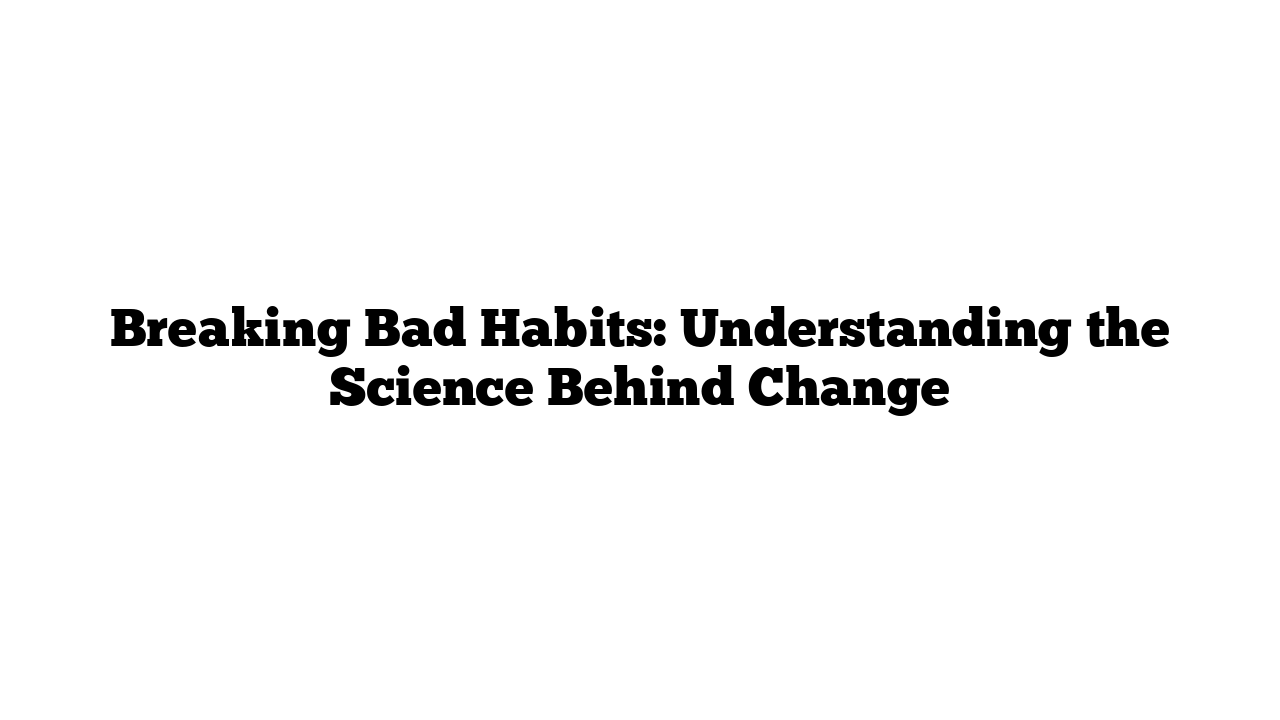Many people struggle with bad habits at some point in their lives. Take nail-biting, for instance—billions of people have tried to break this habit, often resorting to extreme measures. Some rub chili peppers on their cuticles, while others wear gloves or even dip their hands in salt. Though not everyone bites their nails, we all have habits we’d like to change. So, how can we effectively break these habits?
What Are Habits?
Scientists define habits as behaviors we perform regularly, often without thinking. These behaviors are typically triggered subconsciously by our environment, whether it’s a specific location, time of day, or emotional state. Habits can be simple, like picking at your hair when stressed, or more complex, like staying up late or brewing your morning coffee.
When we engage in a behavior frequently, it becomes a habit. This happens because our brains learn that the behavior offers some benefit. For instance, after receiving a stressful email, you might bite your nails. This action provides a momentary distraction from anxiety, reinforcing the habit.
The Role of Dopamine in Habits
Positive experiences can lead to the release of dopamine, a neurotransmitter responsible for feelings of pleasure. Dopamine also drives neuroplasticity, meaning it helps change how our neurons connect and communicate. Over time, your brain forms connections that link the rewarding behavior with the trigger, compelling you to repeat it.
Once established, these cue-behavior-reward loops become automatic. You may find yourself biting your nails simply because you’re sitting at your desk, even if there’s no stressful email in sight. While this automaticity can be helpful, as it allows us to act quickly in familiar situations, it can also trap us in unhelpful habits.
Why Breaking Habits Is Challenging
Interestingly, research shows that people spend over 40% of their days engaging in habits while their minds wander. For example, you might have an automated morning routine that saves you time and mental energy. However, many habits no longer serve our best interests.
Simply intending to change a habit is often not enough. To successfully break a habit, we need to understand how they form and operate. Research indicates that habits are often triggered by specific environments or routines. For instance, lying in bed might lead to mindless phone scrolling, while relaxing on the couch might trigger a craving for a sugary snack.
Strategies for Breaking Bad Habits
One effective way to manage behaviors is to identify your triggers—those specific locations or times of day when you’re most likely to engage in the habit. Once you recognize these cues, try modifying your environment. You can change your routine or create obstacles to make it harder to engage in the unwanted behavior.
Change Your Environment
Major life changes, like moving or starting a new job, can be excellent opportunities to break old habits or form new ones. A study conducted in 2005 followed university students who switched schools. The results showed that their habits—whether it was exercising, reading, or watching TV—significantly changed in new environments.
Habit Reversal Training
For more challenging habits like nail-biting or hair-pulling, consider habit reversal training. Developed in the 1970s, this method aims to replace a bad habit with a less harmful one. To succeed, analyze your habit cues so you can intervene effectively. For instance, if you typically bite your nails at work, keep a fidget toy on your desk. When a stressful email arrives, use the toy instead of your nails.
Be Patient and Celebrate Progress
Remember, breaking a habit takes time. Be patient and give yourself grace during this process. While it’s easy to focus on what we want to change, it’s equally important to celebrate the good habits that help us navigate our daily lives successfully.
As you embark on your journey to break a bad habit, keep in mind that understanding the science behind habits can empower you to create effective change.
For more information about habits and behavior change, consider visiting trusted resources like the World Health Organization or Wikipedia.
Embrace the process and remember that every step counts!
